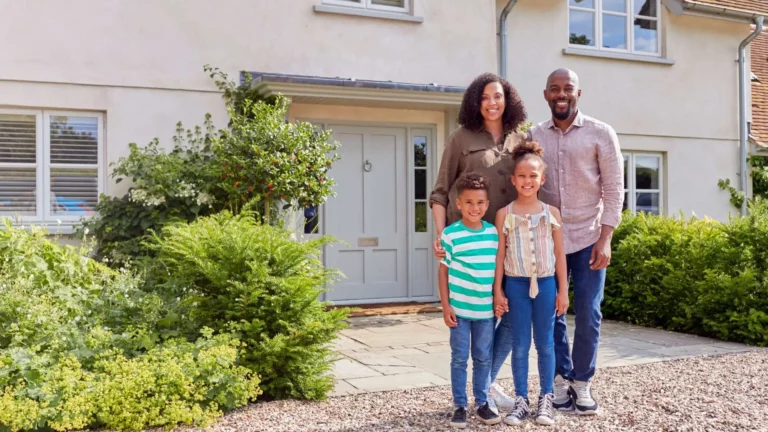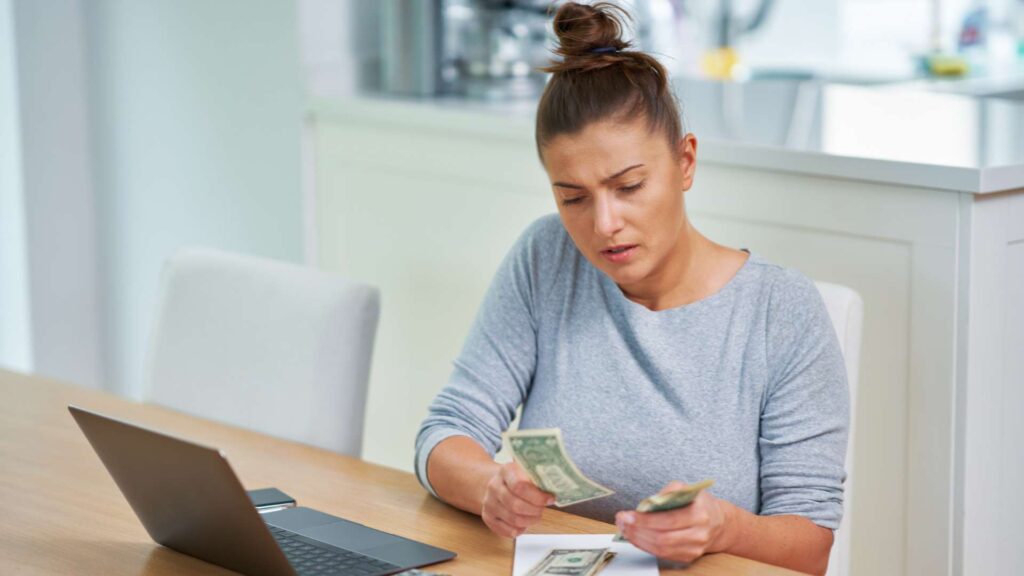Table of Contents
Buying a home for the first time is one of those huge financial leaps that sits somewhere between thrilling and terrifying. There’s excitement, but also this quiet panic under the surface. Because it’s not just about signing papers or finding the perfect paint color, it’s about making one of the biggest financial commitments of your life and hoping you don’t screw it up.
Between saving for a down payment, qualifying for a mortgage, and facing closing costs that always seem higher than anyone warned you about, preparation isn’t just “recommended.” It’s mandatory. And the truth? Most first-time buyers underestimate the amount of preparation that is required for this.
This checklist isn’t meant to deter anyone; it’s designed to ensure that everyone enters the process with a clear understanding of the requirements. Step by step, it lays out the real financial groundwork from sorting out your credit mess to planning for the moment after you’ve moved in and realize, oh great, the water heater just died.
Step 1 – Assess Your Financial Readiness
Before considering factors such as curb appeal or neighborhood characteristics, prospective homeowners must first conduct a thorough assessment of their financial situation. This entails examining income, expenses, and the remaining balance at the end of each month.
Assessing financial readiness means digging through income, expenses, savings, and, yes, debts, even the ones you like to pretend don’t exist. It’s about figuring out your debt-to-income ratio (DTI), that ugly little number lenders love. If it’s too high, they’ll politely decline your mortgage, and you’ll wonder why you ever bought that second car.
Sometimes, short-term obligations can hinder long-term goals. Maybe there’s a medical bill, or your credit card balance just won’t quit. Tools like Beem’s Instant Cash can serve as a stopgap for liquidity management, preventing you from draining your savings or derailing your plans. It’s not magic, but it can keep things steady while you prep for the bigger picture.
Step 2 – Strengthen Your Credit Profile
This part is where people either nod confidently or start sweating. The credit score is the silent judge in the homebuying courtroom, and it decides how much you’ll pay for your loan over the next few decades.
Careful financial planning includes checking all three major credit bureaus —Experian, Equifax, and TransUnion —because errors can occur. Also, lenders don’t care if your identity got mixed up with another person’s. Dispute the mistakes. Pay down high-interest cards. Avoid opening new lines of credit just because a cashier offers you a discount.
Here’s the thing: a few points on your credit score can mean thousands saved or lost. A stronger score doesn’t just get you approved; it gets you respect from lenders. Lower rates, better terms, fewer issues. It’s tedious work now, but it’s the difference between feeling relieved or resentful every time the mortgage payment clears.
Step 3 – Define Your Budget and Price Range
The 28/36 rule is a decent starting point: housing costs shouldn’t exceed 28% of your income, and total debt shouldn’t cross 36%. But numbers don’t tell the whole story. Life happens: cars break down, kids need braces, roofs leak.
It’s smarter to buy under your limit and sleep peacefully than to stretch thin and regret it. Factor in utilities, maintenance, and property taxes. If you’re shocked at how quickly the “monthly estimate” grows, good, that’s the point. Better to be shocked now than when you’re juggling bills after the move.
Read related blog: Down Payment Assistance: Where to Find Real Programs for US Homebuyers
Step 4 – Build a Solid Down Payment Fund
Here’s where patience separates the impulsive from the prepared. Ideally, you want 20% down, not because some guru said so, but because it spares you from private mortgage insurance (PMI). That extra monthly cost adds up, and it’s money that goes nowhere.
Of course, not everyone can cough up 20%. That’s fine. There are first-time homebuyer programs, FHA, VA, and USDA loans designed to help. The key is not to rush.
Automate savings into a high-yield account, something that grows quietly in the background. Treat it like a bill you have to pay yourself. The slower path isn’t always the weaker one; it’s the one that actually lasts.
Step 5 – Account for Closing Costs and Hidden Fees
Closing costs typically range between 2% and 5% of the purchase price, yet somehow, everyone seems surprised. Don’t be that buyer.
You’ve got appraisal fees, title insurance, inspections, legal charges, and a bunch of administrative nonsense that adds up faster than you’d think. Then there’s the moving truck, the security deposit for utilities, maybe even an emergency hotel stay if your move gets delayed.
Post-purchase costs can sneak up quickly. Thorough financial planning accounts for closing costs, insurance, and an emergency fund, keeping your homeownership journey stable and worry-free.
Step 6 – Get Pre-Approved for a Mortgage
Pre-approval isn’t just paperwork; it’s strategy. It shows sellers you’re serious, and it gives you a clearer idea of what’s actually affordable.
But don’t just sign with the first lender who emails you. Shop around and compare rates, fees, and terms, everything. A quarter-percent difference might not sound like much, but over 30 years, it’s the equivalent of the cost of a car. Maybe two.
And here’s a tip people often overlook: once you begin this process, refrain from making major financial changes. Don’t quit your job, don’t buy a car and don’t open a new credit card. Lenders are skittish, and any sudden move makes them nervous. You don’t want “nervous” attached to your loan approval.
Read related blog: Closing Costs Explained: What’s Negotiable for Homebuyers in 2025
Step 7 – Plan for Emergency and Maintenance Funds
Repairs, leaks, the furnace dying in midwinter – these things don’t wait until payday. That’s why an emergency fund of three to six months of expenses is non-negotiable. It’s your oxygen tank when something goes wrong.
Keep it separate from your home savings. You don’t dip into one for the other. Consider Beem’s Instant Cash here as a backup, not a habit. A short-term bridge to cover an urgent repair without blowing up your financial stability. Owning a home isn’t about having everything perfect; it’s about being ready when it’s not.
Step 8 – Review Insurance and Protection Needs
Homeowners insurance is the obvious one, but it’s not the only one. Depending on where you live, you may need flood coverage, earthquake coverage, or another type of coverage that the basic policy does not include.
And while we’re here, let’s talk life and disability insurance. If someone’s depending on your income and you’re locking into a mortgage, skipping this coverage is reckless.
Additionally, consider exploring bundled plans or partner benefits offered through financial apps. Sometimes those platforms Beem included offer lower premiums when you combine coverage. Protection isn’t glamorous, but losing your home due to bad luck is even worse.
Step 9 – Evaluate Long-Term Affordability
Too many buyers stop thinking after the closing. They get the keys and breathe a sigh of relief, but the big mistake is that the long-term costs don’t stop growing.
Property taxes rise. HOA fees creep up. Insurance premiums adjust. And if you’ve got a variable interest rate, well, that can sting later. So build a homeownership budget that accounts for the boring, recurring costs.
Financial comfort beats square footage every single time. A slightly smaller home that allows you to save for travel or emergencies is worth more than a large one that keeps you in debt.
Step 10 – Plan Post-Purchase Financial Stability
The ink’s dry, the keys are yours, and now reality kicks in. After the move, don’t rush to furnish or remodel everything at once. This is where people undo months of smart planning.
Begin with a post-move financial plan: replenish your emergency fund, rebuild your savings, and prioritize debt management. Watch your spending in the first few months; they can be deceptive.
Keep tracking your credit, too. Staying mortgage-ready means staying disciplined. Down the line, you may want to refinance or upgrade, and a solid financial record makes that possible.
Read related blog: Financial Planning for Career Change: Steps to Secure Income
FAQs on Financial Planning Checklist for First-Time Homebuyers
How much should I save before buying my first home?
Ideally, enough to cover the down payment, closing costs, and a three-month emergency cushion. For most people, that’s 25–30% of the home’s value. It’s not fun saving that long, but it keeps you from panic-spending later.
What’s the ideal credit score for first-time homebuyers?
Shoot for 700 or higher. It’s not a hard rule, but anything below 660 makes lenders twitchy, and rates tend to jump.
Should I pay off debt before saving for a down payment?
Depends on the debt. Knock out high-interest balances first, such as credit cards and personal loans. Lower-interest or manageable debt can coexist with your savings plan. Balance, not extremes.
How can I accurately estimate my closing costs?
Expect 2–5% of your purchase price. Ask your lender for a Loan Estimate (LE), which provides a detailed breakdown of the charges. Don’t just glance at it; question every line.
Can Beem’s Instant Cash help cover urgent home expenses after purchase?
Yes, it’s designed exactly for that short-term liquidity without requiring long-term savings or incurring credit card interest. It’s a bridge, not a crutch.
Conclusion
With a structured checklist covering credit, savings, insurance, and emergency funds, first-time buyers can walk into ownership without the constant knot of financial anxiety.
And for the rough patches? Tools like Beem’s Instant Cash can smooth the bumps and keep the transition steady. Download the app now!
Homeownership isn’t about perfection; it’s about being ready, resilient, and realistic. That’s what turns a purchase into stability.















































